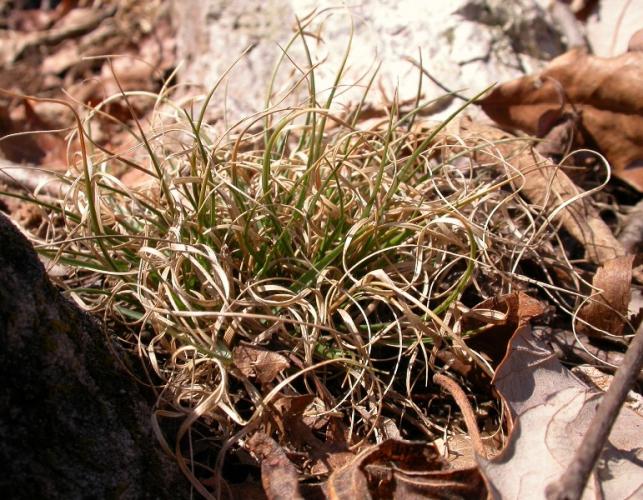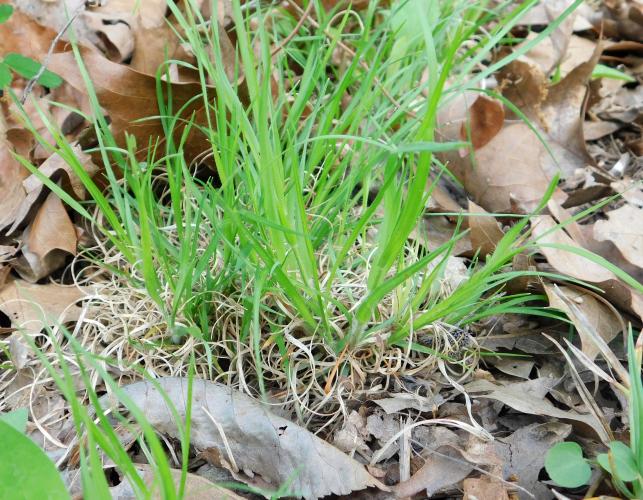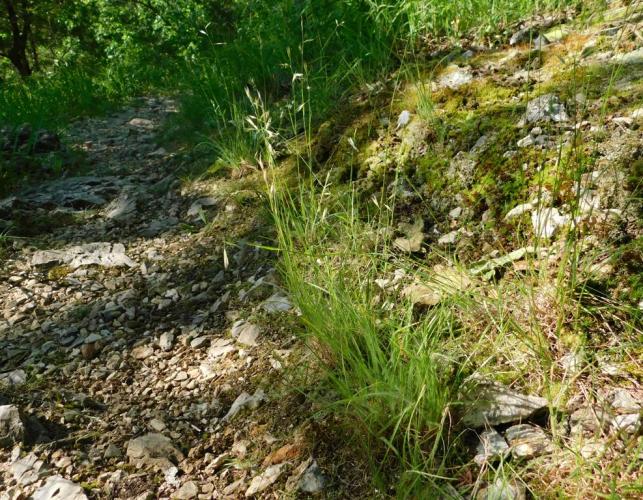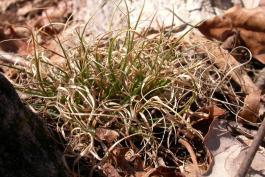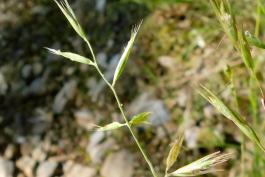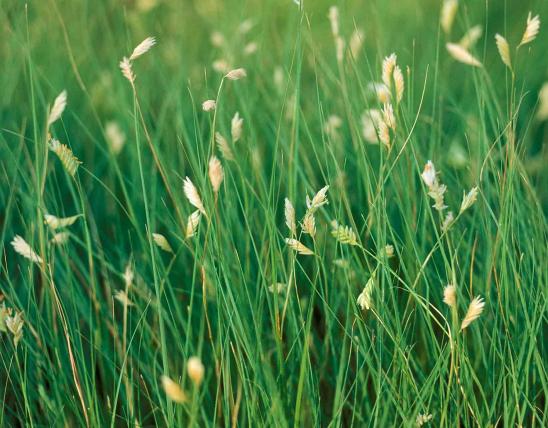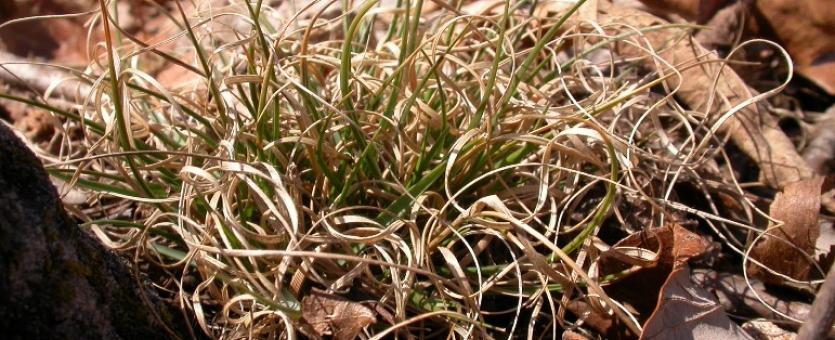
Poverty grass is a rather short and delicate tuft-forming perennial. You can identify it by the leaves alone. The basal leaves persist for several years, usually becoming dry, strawlike, and curly. These rosettes of short, curly leaves make it easy to recognize, even at times when it’s not in flower. Although the flowering stems can be 2 feet high, the basal leaves remain low, only getting about 5 inches long.
Indeed, poverty grass may actually be more difficult to recognize during its flowering season, starting about May or June, since the fresh, erect leaves look so different from the low, curly leaves we see other times of the year. But if you look carefully at the base, you will still see the curly leaves below the new growth. Fresh leaf blades are not curled, though the edges are usually rolled inward. Where the leaf blade joins the stem, there is a prominent tuft of hairs on either side of the attachment point of the leaf blade (that is, the ligules are a line of short, dense hairs). Note that plants may vary in the amount of overall hairiness, with some having few hairs on the leaves or stems and others having more.
The single flowering stems are unbranched or few-branched, loosely flowered, and may reach about 2 feet tall. Each spikelet is about ½ inch long and contains 4–9 florets. A few crooked, hairlike awns protrude from the spikelets. Flower heads develop July–September.
In addition to its obvious flowering stalks, poverty grass has additional single-flowered spikelets hidden in most of its leaf axils. These hidden spikelets are cleistogamous (kly-STAH-guh-muss): they stay closed and fertilize themselves without opening. Meanwhile, the florets of the flower stalk may be either open-flowering or cleistogamous.
Height: flowering stems 6–24 inches. Leaves usually only to about 6 inches.
Common statewide except for the northwestern portion of the state.
Habitat and Conservation
Occurs in dry to less commonly moist upland forests, upland prairies, glades, and upper ledges and tops of bluffs; also in old fields, eroded portions of pastures, roadsides, and dry, disturbed areas, usually on acidic substrates. Hikers frequently see this grass growing on the thin, rocky soils of dry upland Ozark woods.
The ability of poverty grass to produce seeds without the need for florets to open or to be pollinated is an important adaptation. It allows this grass to complete its life cycle in the seasonally dry habitats where it lives, and it allows a single individual plant to colonize a new habitat rapidly.
Status
Native perennial cool-season tuft-forming short grass.
Human Connections
Poverty grass has potential as a low, interesting native accent or groundcover (if planted in groups) in rock gardens where it will not be overshadowed or crowded by other plants.
Ecosystem Connections
Poverty grass is a characteristic plant of Missouri’s dry upland woods. It requires relatively open habitats and cannot compete with taller vegetation crowding around it. Missouri’s open woodland and glade habitats historically were kept open by periodic natural or human-set fire.
Several types of insects feed on poverty grass, notably the caterpillars of some species of skippers, plus grasshoppers and leafhoppers.
Poverty grass is not an important food source for grazing mammals such as deer mostly because it’s so small.
With its fibrous roots, poverty grass helps to stabilize soils in its dry, rocky hilltop habitats, preventing erosion.
Several other plants produce cleistogamous (non-opening, self-fertilizing) flowers. Water star-grass, a native aquatic plant with bright yellow starlike flowers, also has additional, hidden, never-opening flowers. Other plants famous for cleistogamy are the violets. If you lift up the leaves and look at the base of a violet plant, you’ll usually find several pale, never-opening flower buds and their resulting seed capsules.
